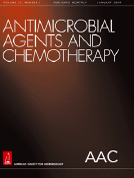- Home
- Dipartimento
- Ricerca
- Didattica
- Post Lauream
- Servizi e strumenti
- Trasferimento della conoscenza
Nuova pubblicazione - Il meccanismo di uccisione dal peptide ricco di prolina Bac7 (1-35) contro i ceppi clinici di Pseudomonas aeruginosa varia da quello contro altri batteri Gram-negativi
Pubblicato dal gruppo dei prof. Gennaro e Scocchi
Tipologia news:
home
Pseudomonas aeruginosa infections represent a serious threat to worldwide health. Proline-rich antimicrobial peptides (PR-AMPs), a particular group of peptide antibiotics, have demonstrated in vitro activity against P. aeruginosa strains. Here we show that the mammalian PR-AMP Bac7(1-35) is active against some multidrug-resistant cystic fibrosis isolates of P. aeruginosa By confocal microscopy and cytometric analyses, we investigated the mechanism of killing against P. aeruginosa strain PAO1 and three selected isolates, and we observed that the peptide inactivated the target cells by disrupting their cellular membranes. This effect is deeply different from that previously described for PR-AMPs in Escherichia coli and Salmonella enterica serovar Typhimurium, where these peptides act intracellularly after having been internalized by means of the transporter SbmA without membranolytic effects. The heterologous expression of SbmA in PAO1 cells enhanced the internalization of Bac7(1-35) into the cytoplasm, making the bacteria more susceptible to the peptide but at the same time more resistant to the membrane lysis, similarly to what occurs in E. coli The results evidenced a new mechanism of action for PR-AMPs and indicate that Bac7 has multiple and variable modes of action that depend on the characteristics of the different target species and the possibility to be internalized by bacterial transporters. This feature broadens the spectrum of activity of the peptide and makes the development of peptide-resistant bacteria a more difficult process.

Ultimo aggiornamento: 10-10-2017 - 13:38



